
How Did We Turn a Dead Forest into an Organic Garlic Farm?
The most important thing to consider before you embark on a journey to create a garlic farm, organic or otherwise, is how much you like garlic. If you love garlic and cannot live without it, then you may proceed to the next step. You will also need arable land with fertile, workable soil and a whole lot of time. We had #1, plus about 5 acres of dead oak trees (those darn gypsy moth caterpillars …) and a property full of car size boulders with soil that was infested with briars, and all kind of other invasive terrible, horrible, prickly and insidious weeds. About 2 years after the caterpillars killed our trees, we finally decided to grow something. Originally we considered a diversified vegetable farm – doing CSAs, farmer’s markets, etc. But that seemed like an awful lot of work and more importantly – skills which we did not yet possess. So we asked ourselves a few questions to help us decide a course of action: (1) What kind of vegetables do we really love? (2) What are qualified to grow? (3) What will not get eaten the herds of deer and gophers that roam the area? (4) What is relatively easily to maintain and sell?

The answer of course: garlic. (1) We love it. (2) It is one of the easiest crops to grow. (3) It is pretty much the only green thing that deer, gophers and insects will not eat. (4) Lots of people love garlic! It fetches a nice price, stores well, and if you setup your fields properly, maintenance is manageable. After lots of conversations with other farmers and the wonderful extension specialists at the University of Rhode Island (Thank you Andy!), we stupidly decided to start the process by… clearing about one acre of land.
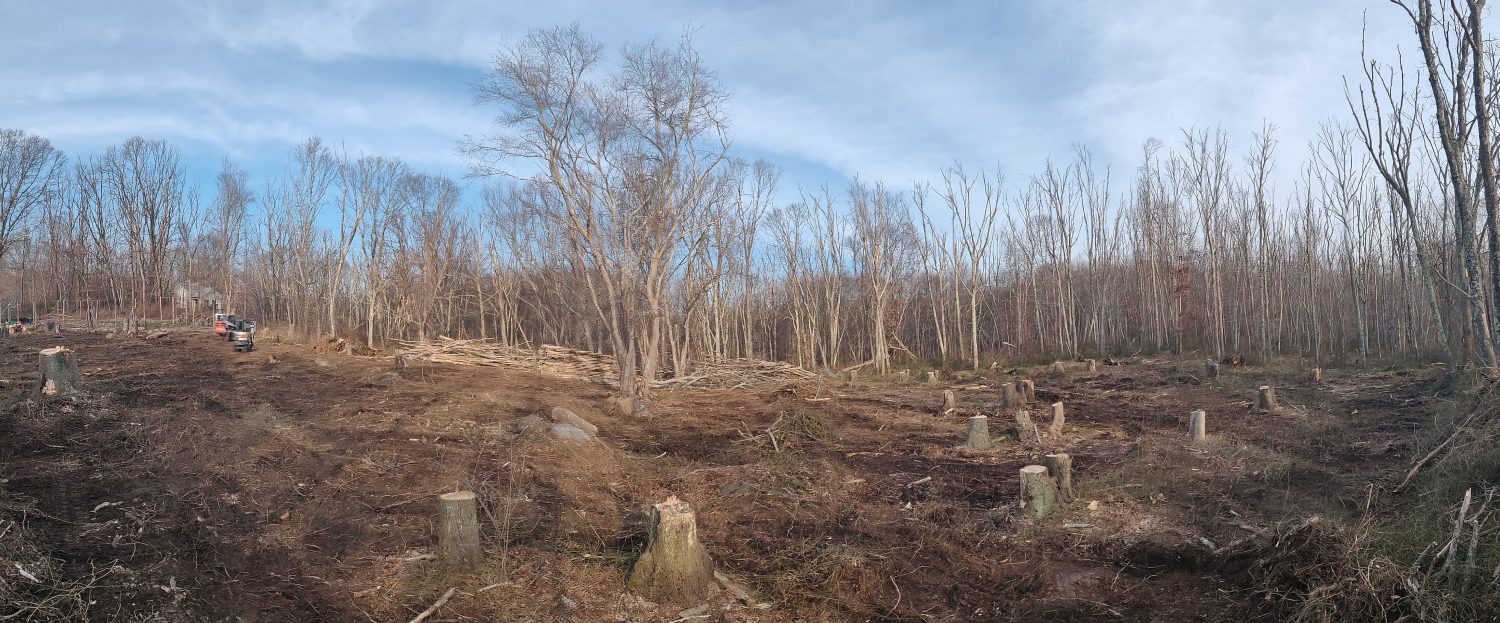
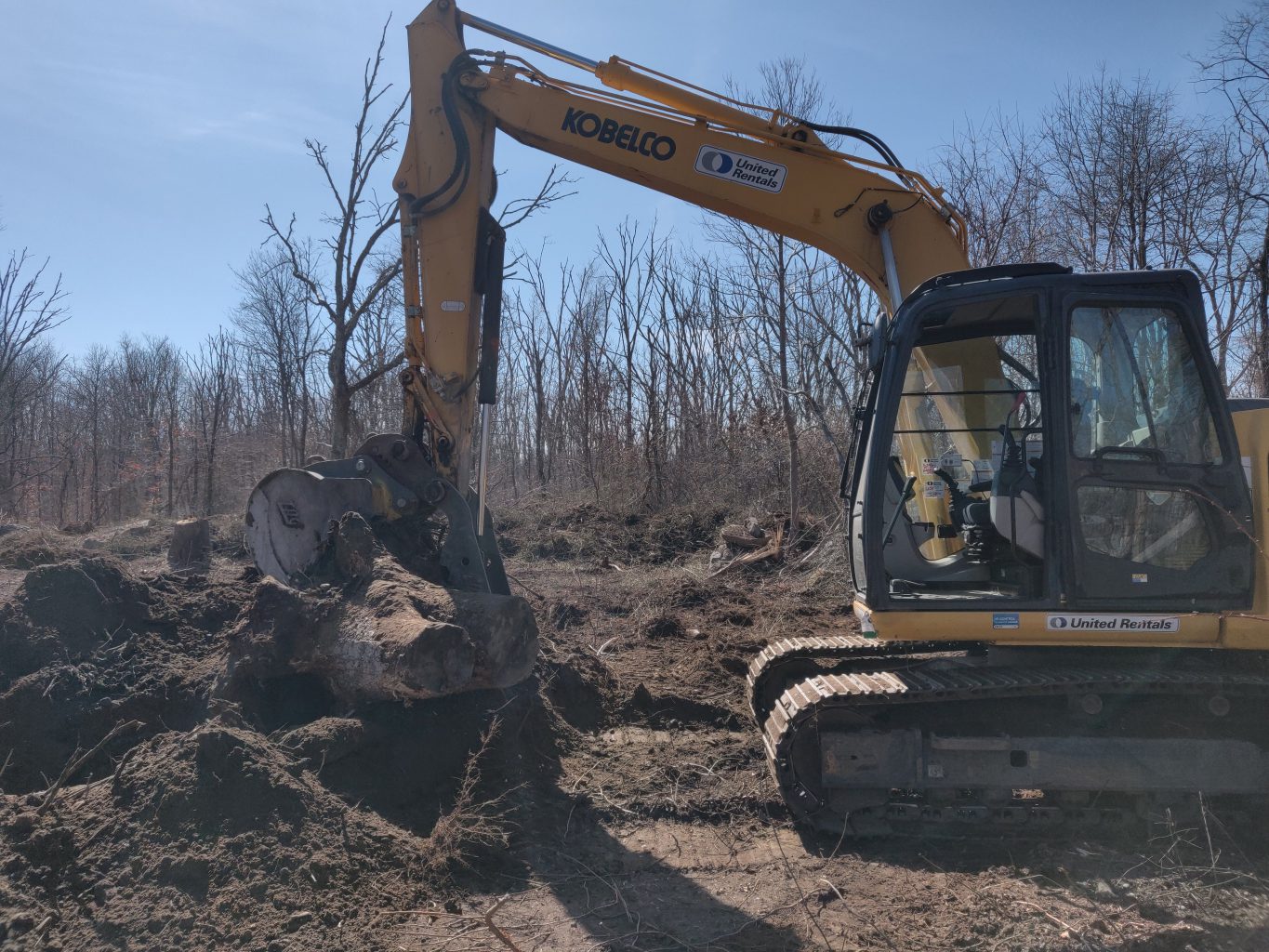
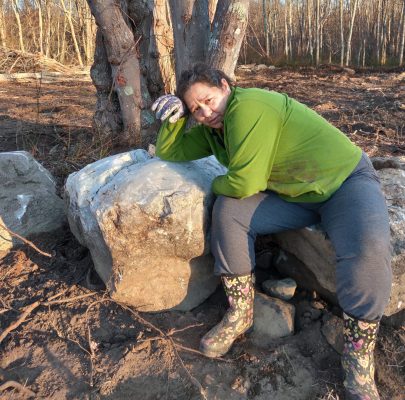
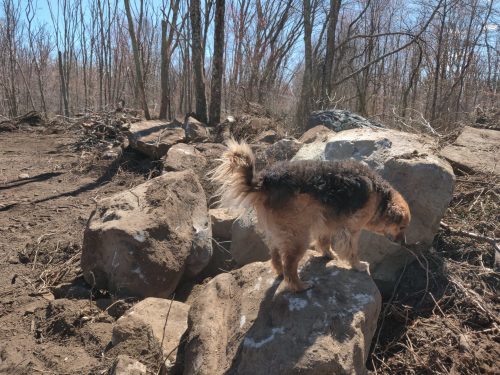
Did I mention the rocks?
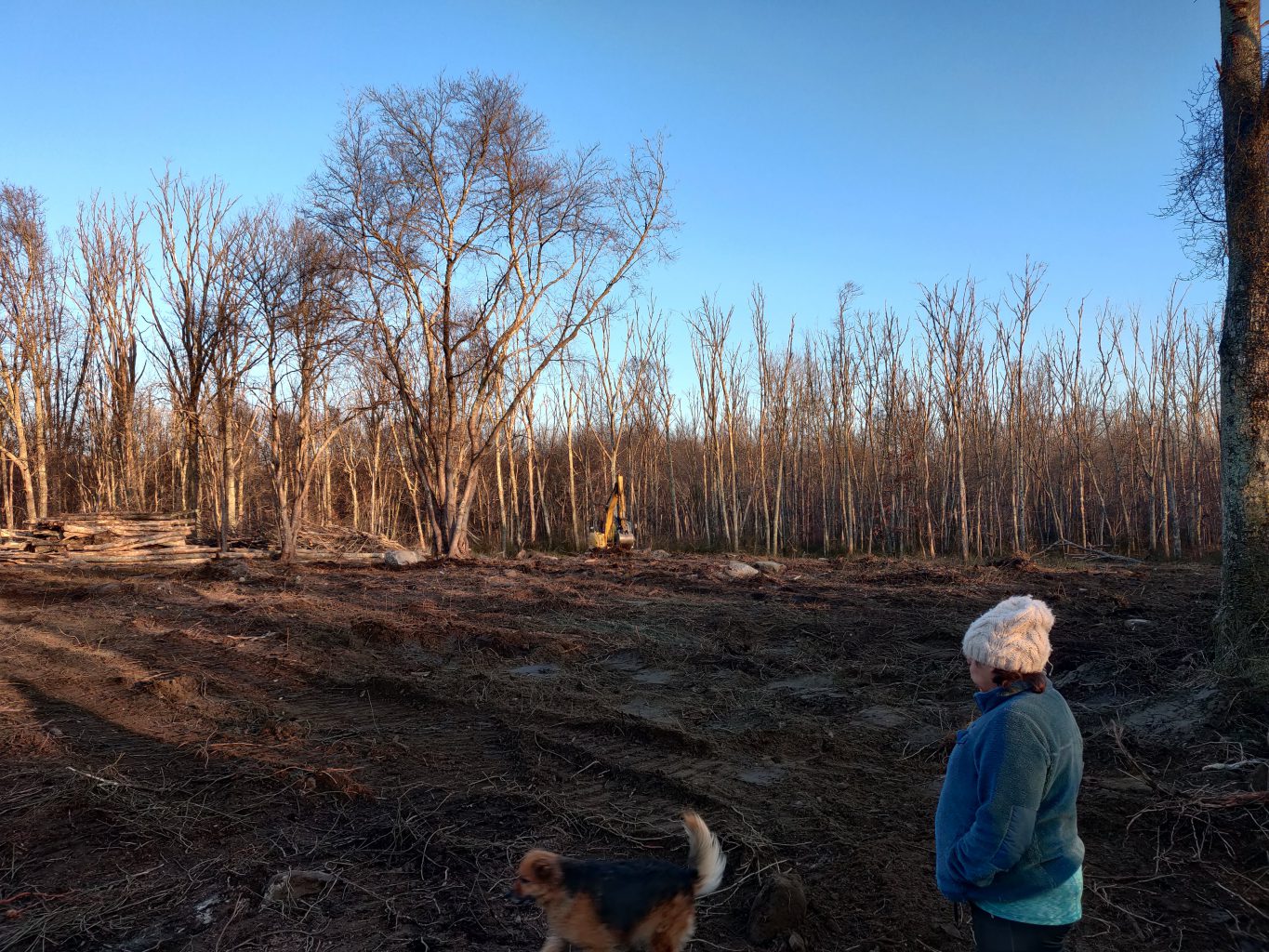
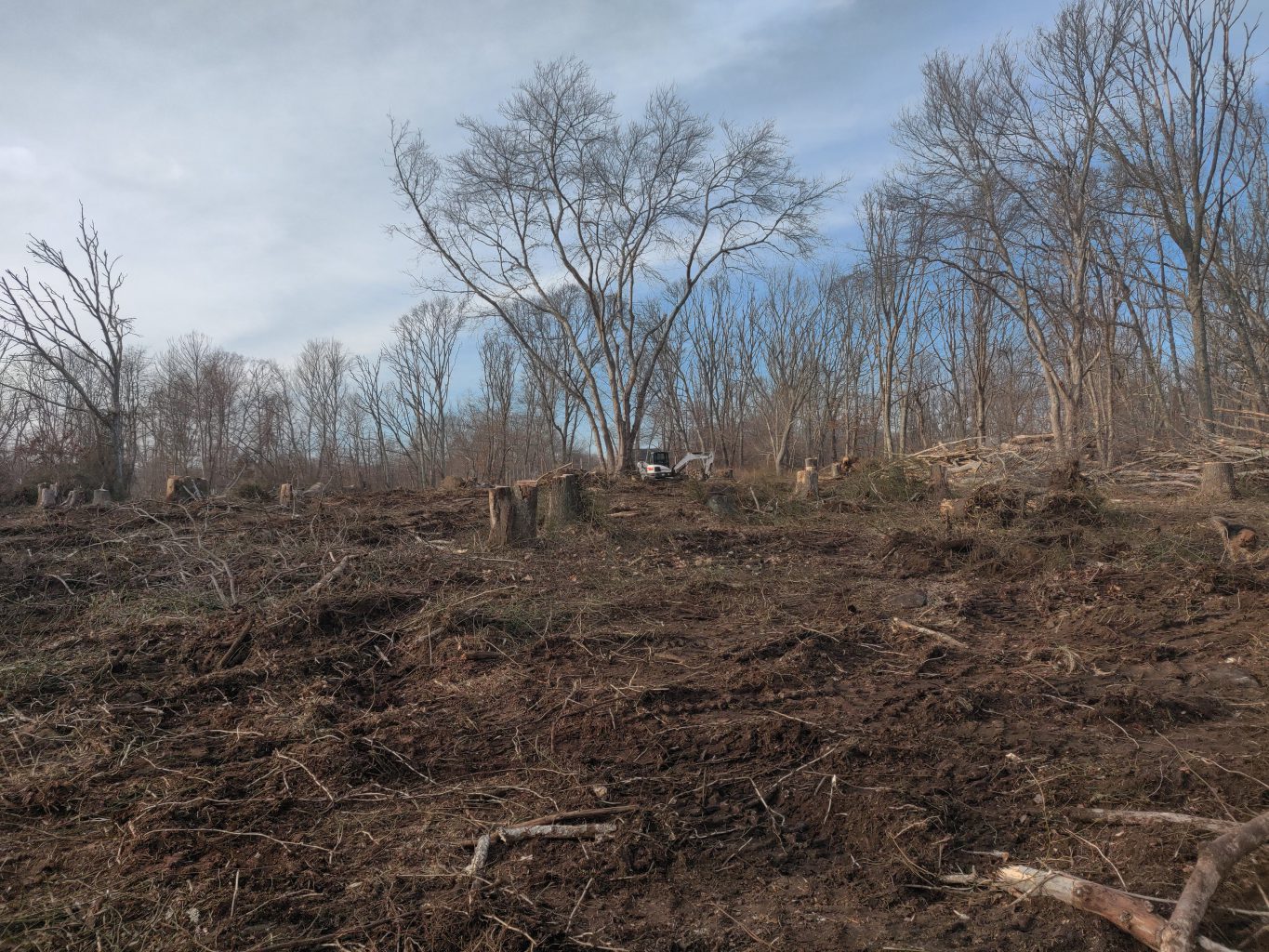
Slowly but surely…
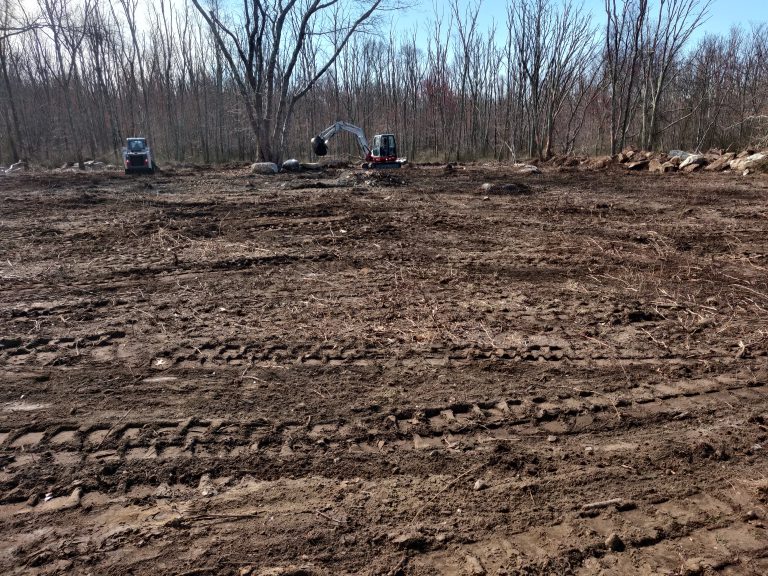
Once all the stumps and at least 10% of the boulders were removed (ugh… this will be a long-term process) our team began to smooth out the 35,000 sqf field.
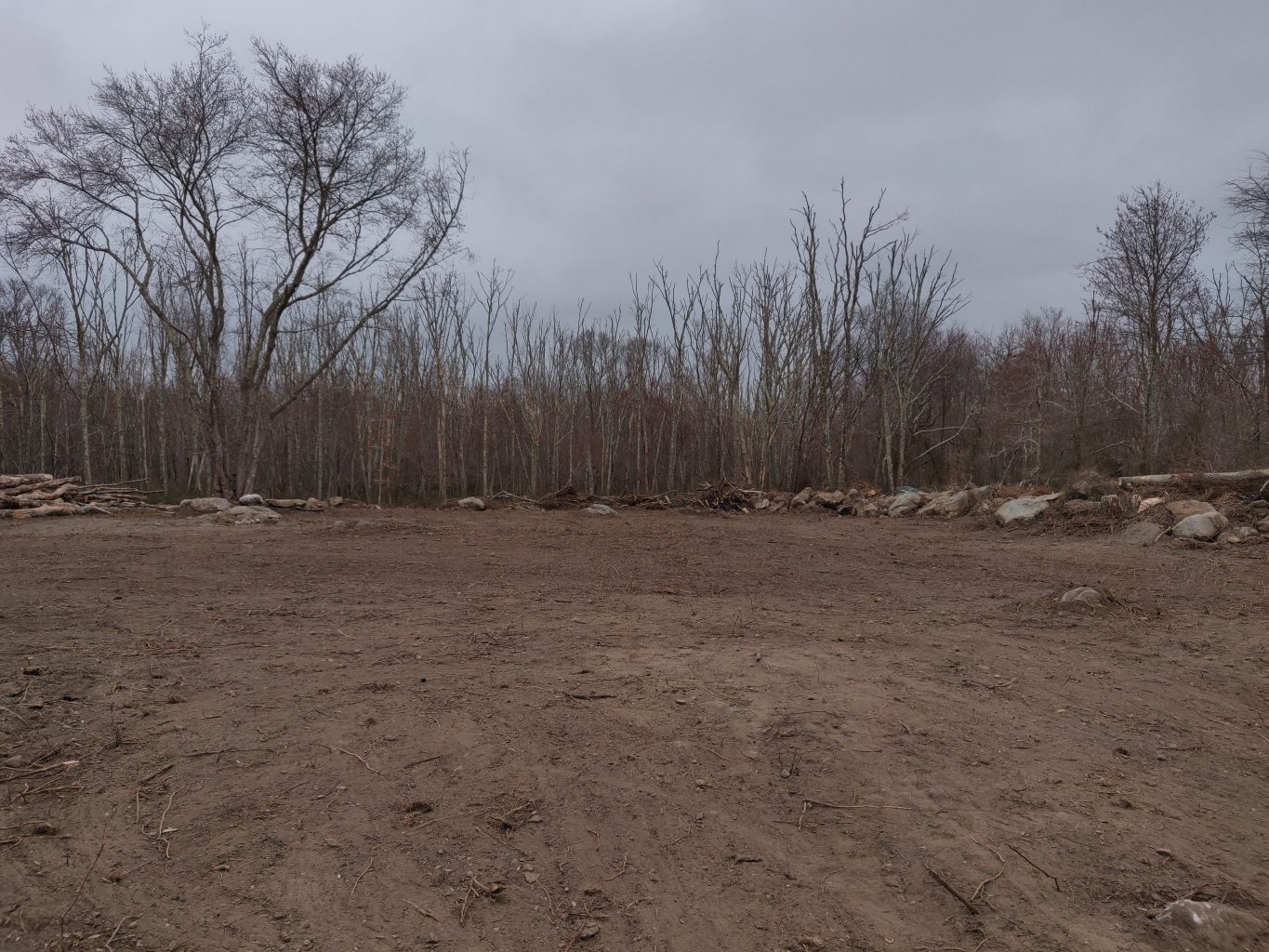
From this far away the field looks great (don’t get too close)!

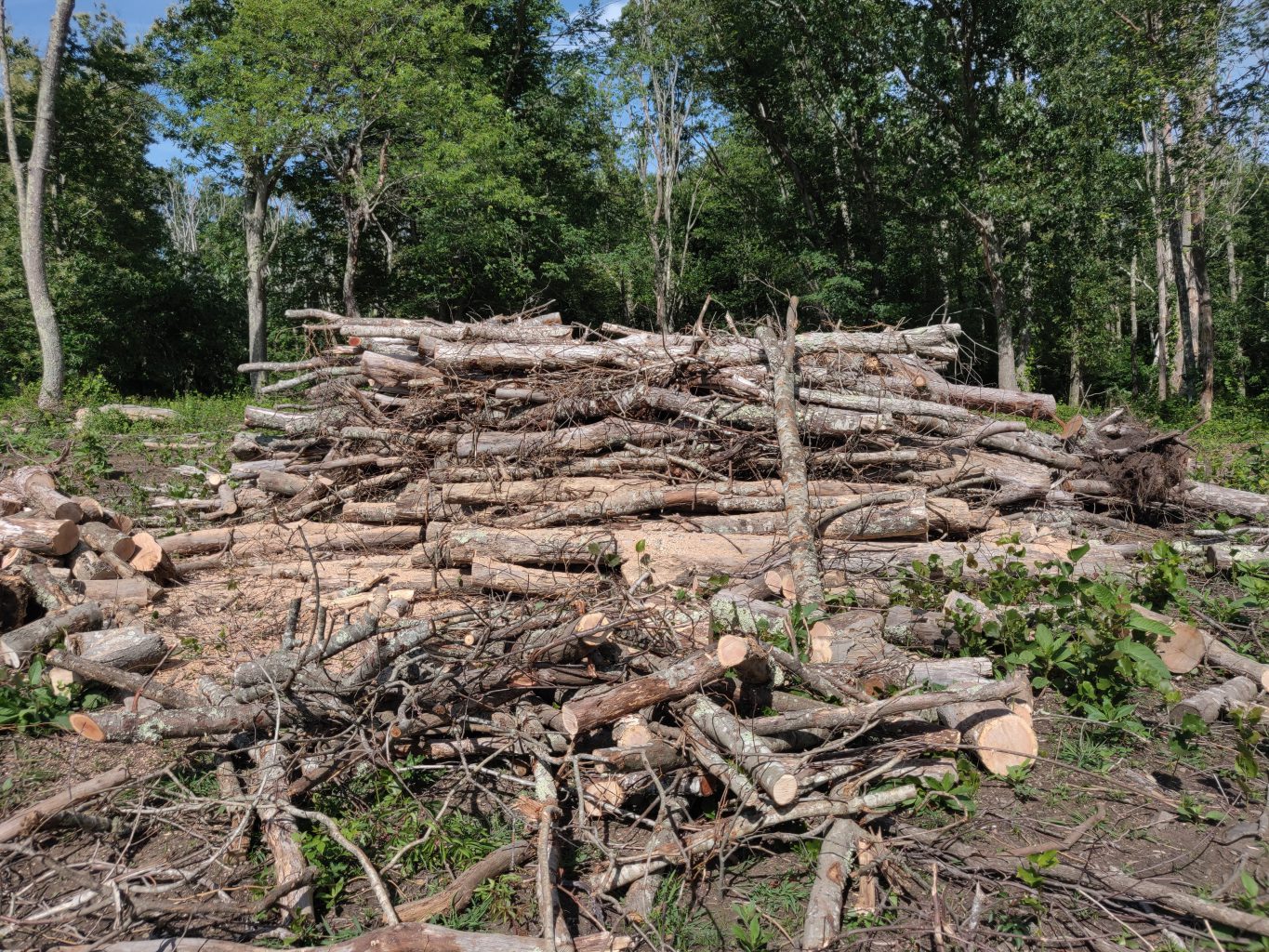
There were just a wee-bit of logs to deal with. This was about one-third of the pile. Don’t ask how many times we moved this pile.
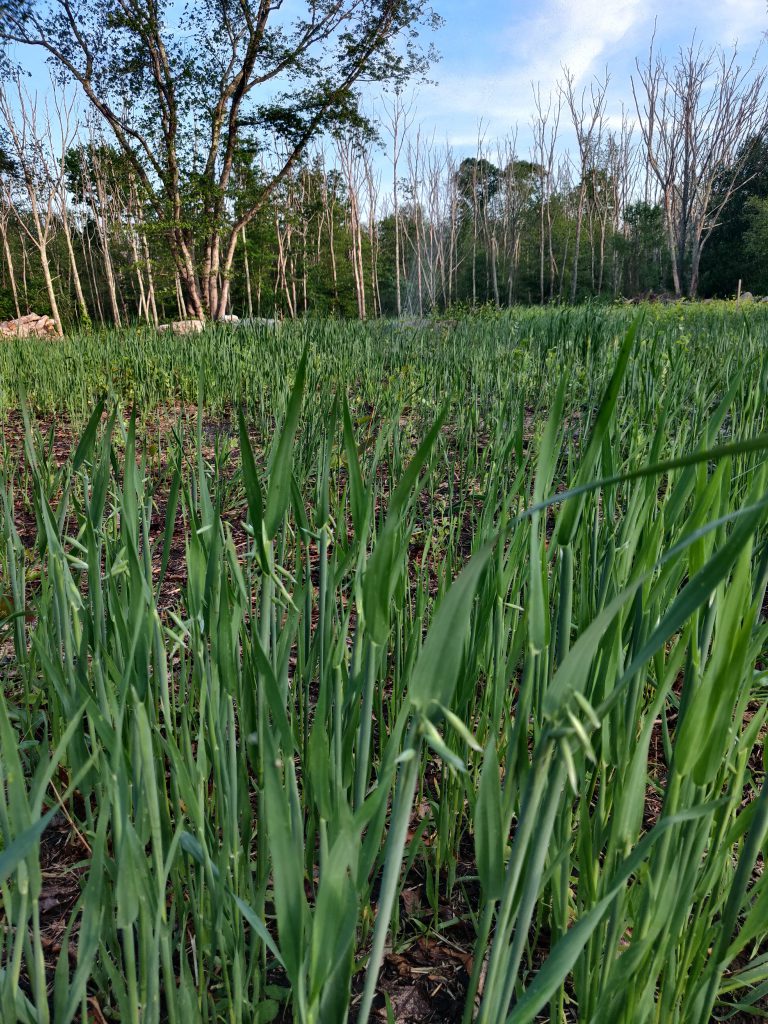
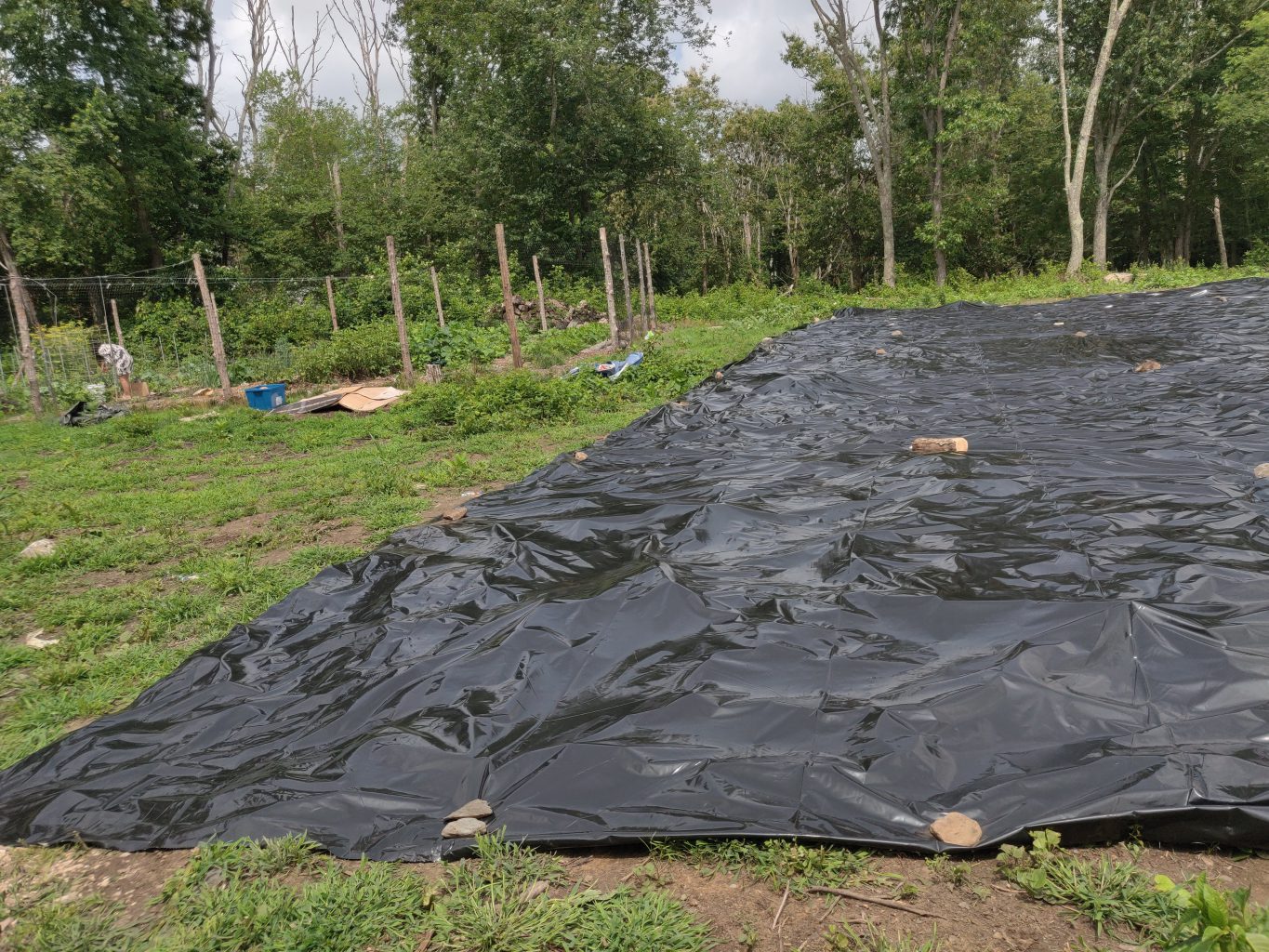
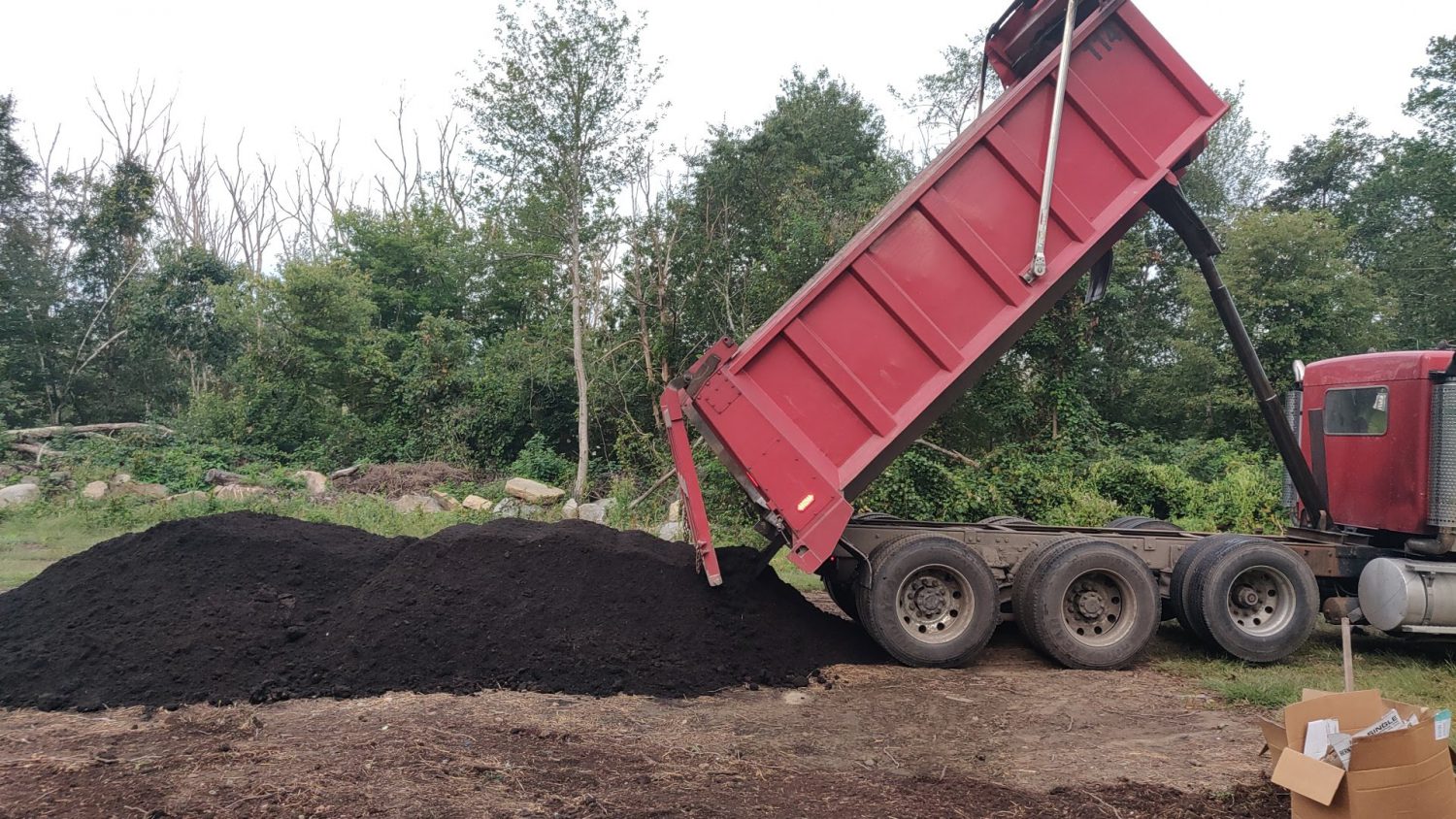
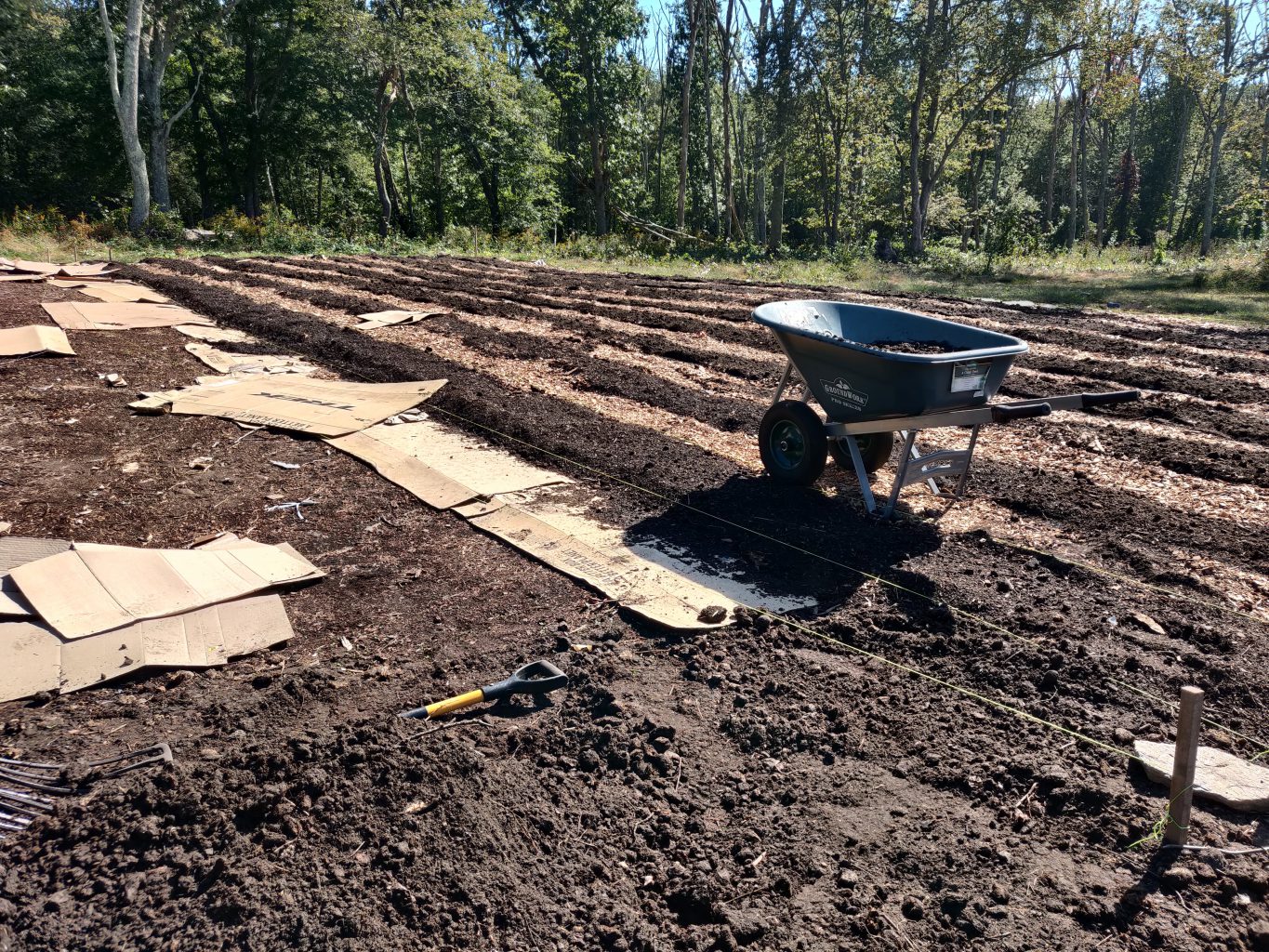
Because we grow using organic methods (and have received organic certification from the Rhode Island DEM) we do not use herbicides or synthetic fertilizers. Our organic farm plan very precisely outlines the practices we have committed to following to maintain soil health, and produce the healthiest, best tasting crops. In order to kill the cover crop, as well as remnant briars and other weeds before we can plant, we lay a silage tarp (5000 square-feet) over the oat/pea cover crop. There it remained for approximately 5-6 weeks. At that point, rather than til the soil (because our organic farm plan calls for no-til methods to promote biologic activity) we (1) lined the 3,000 sqf field with cardboard (thank you to NBX and Stedman’s Bike Shops, and Cardis furniture for the giant boxes!). The cardboard serves as a natural (it quickly degrades) weed-barrier and also invites earthworms and other critters to make a home – all great for the health of the soil. We next spread a total of 25 yards of organic compost in 12 rows, on top of the cardboard about 3-4 inches thick, and between the rows of compost we put woodchips to create maintenance free walking paths. If you are thinking this sounds like a lot of work, you’d be right. In a couple years, when this field is on its second crop, and after planting additional cover crops in these beds, the process will become much quicker. All this work on the front-end is aimed setting-up the growing operation for long-term success.
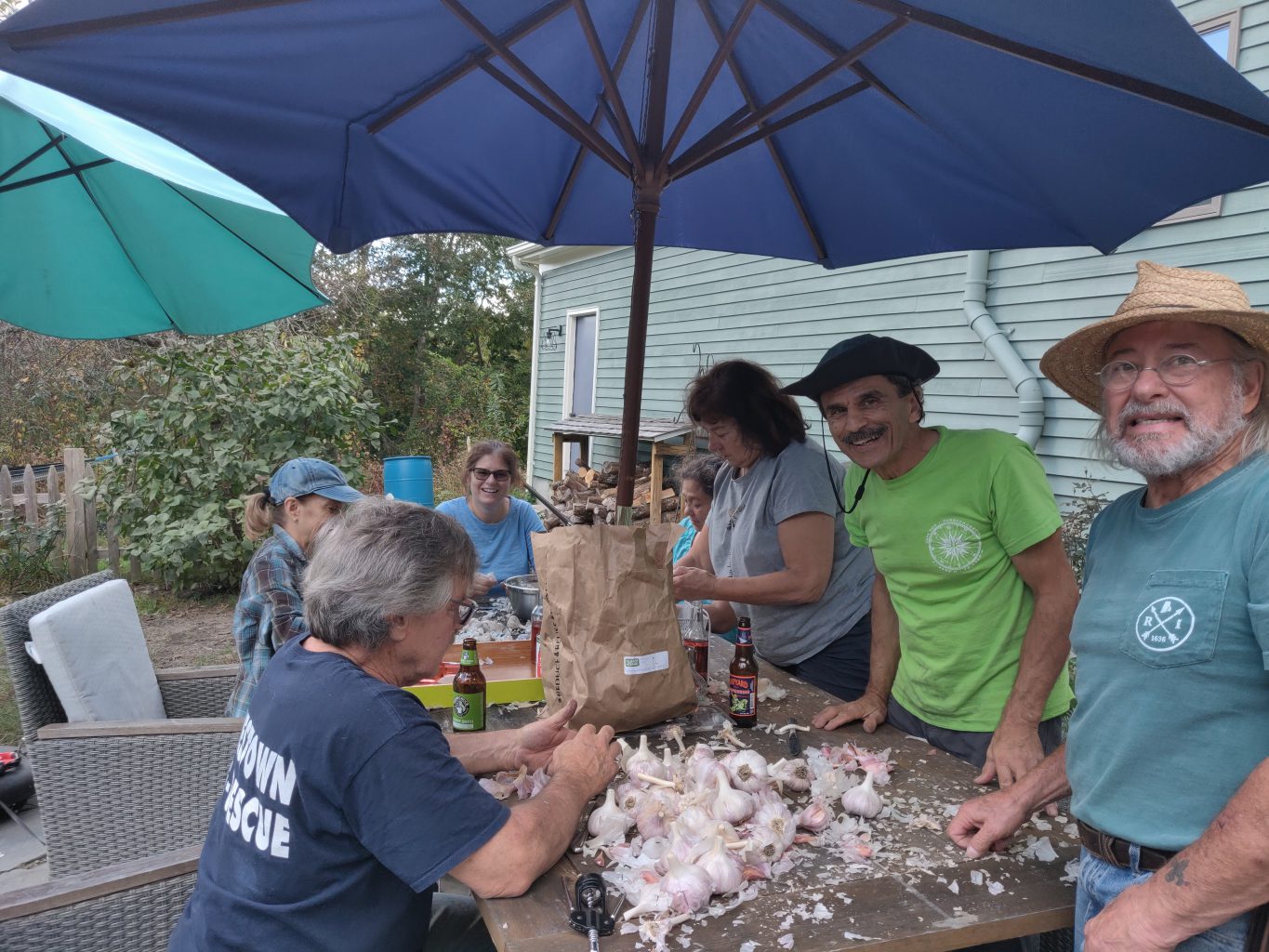
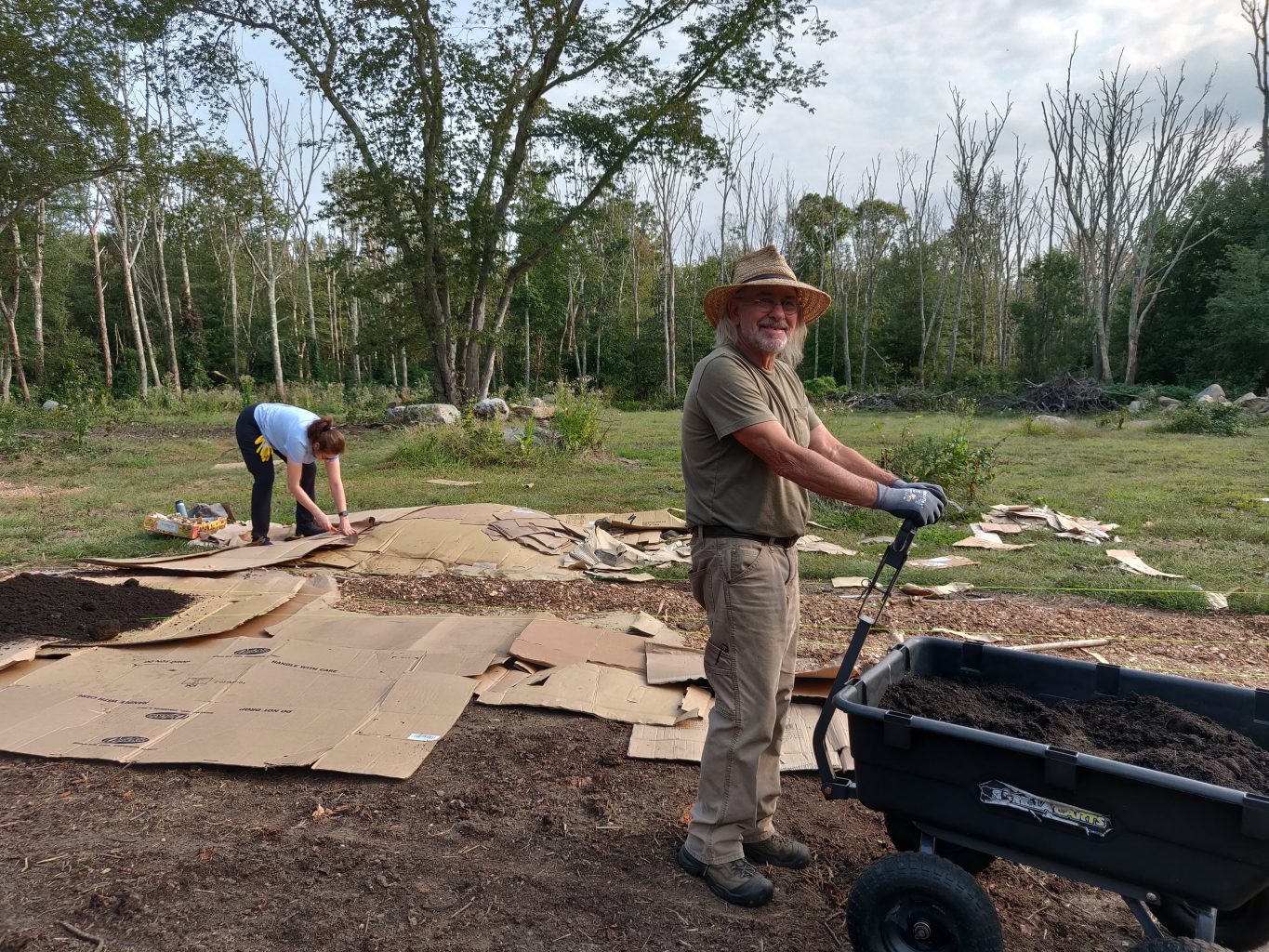
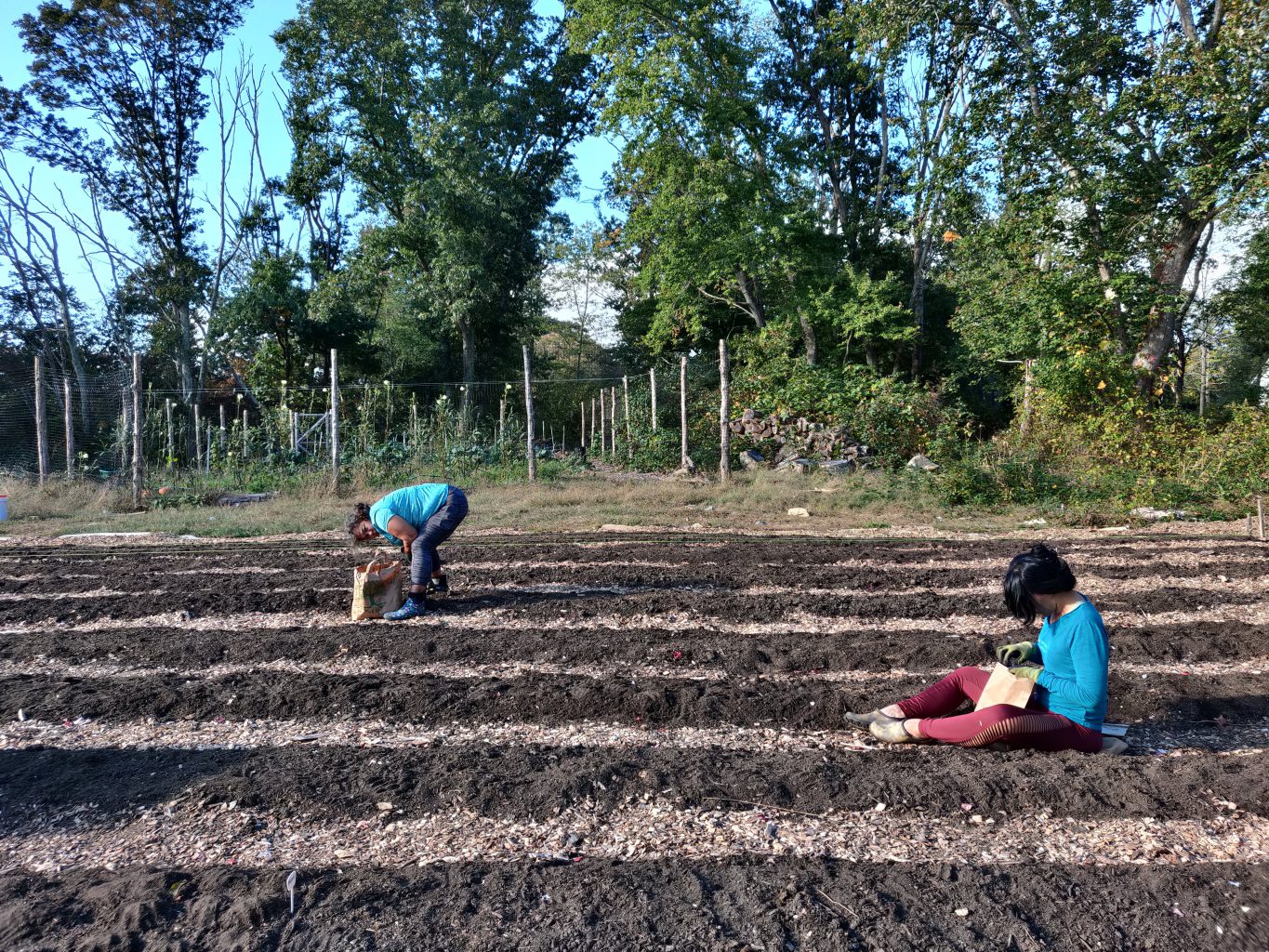
With the help of my awesome friends/ neighbors and family, we got it the first crop in the new field planted … now we are eagerly awaiting spring!


